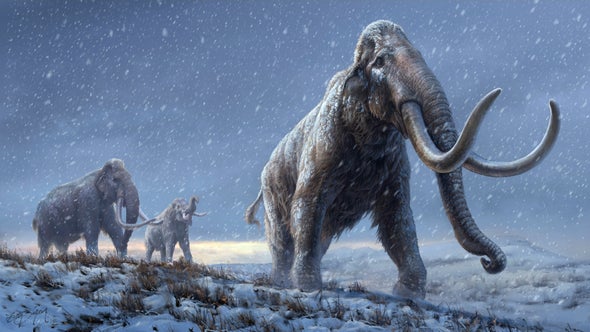Researchers extracted DNA from fossils that are more than a million years old, illuminating the origins of the woolly mammoth and the Columbian mammoth

Scientists have recovered DNA from mammoth fossils found in Siberian permafrost that are more than a million years old. This DNA—the oldest genomic evidence recovered to date—illuminates the evolutionary history of woolly mammoths and Columbian mammoths. It also raises the prospect of recovering DNA from other organisms this ancient—including extinct members of the human family.
Ever since the recovery of two short DNA sequences from a recently extinct zebra subspecies known as the quagga in 1984, researchers have been working to get ever larger amounts of DNA from ever older remains. Advances in ancient DNA extraction and sequencing methods eventually brought to light genomes of creatures from deeper time, including cave bears and Neandertals. In 2013, investigators announced that they had retrieved DNA from a 700,000-year-old horse fossil—by far the oldest genomic data ever obtained. But as astonishingly old as that genetic material was, some experts predicted that sequenceable DNA should survive more than a million years in fossils preserved in frozen environments.



Comments
Post a Comment